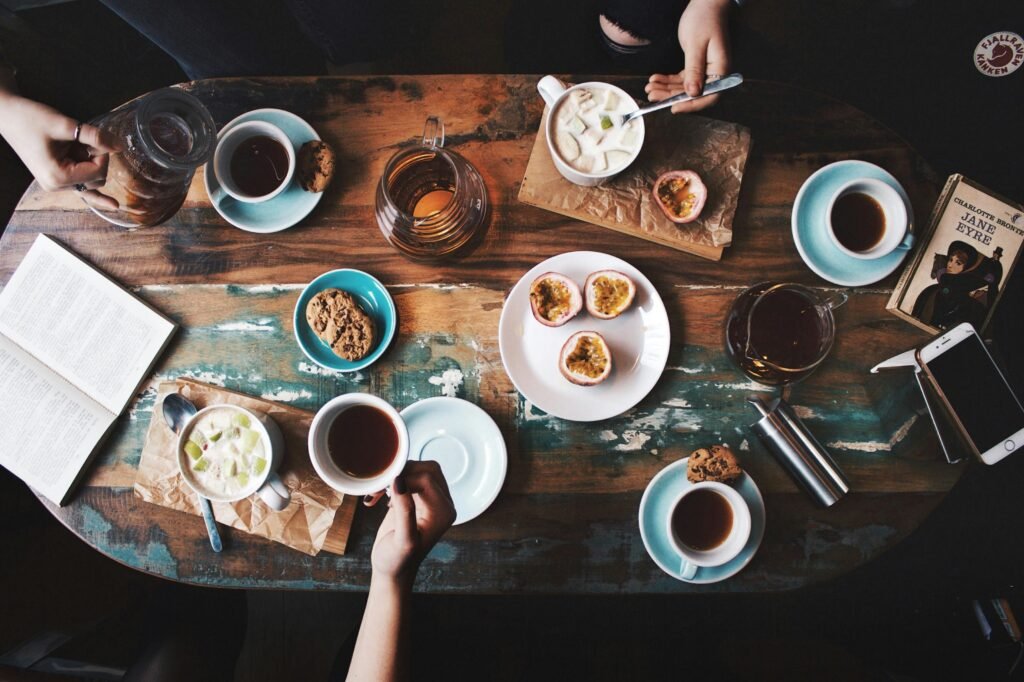From the bustling marketplaces of Istanbul to the quiet cafes of Kyoto, the aroma of coffee is a familiar, comforting scent that transcends borders and languages. It’s more than just a morning pick-me-up; coffee is a ritual, a social lubricant, an economic engine, and a deep-seated cultural touchstone for billions worldwide. Its journey from the highlands of Ethiopia to virtually every corner of the planet is a story steeped in legend, trade, and the simple human desire for connection and stimulation. This article will take you on a global journey, exploring the diverse and fascinating ways coffee is cultivated, prepared, and enjoyed across the globe, highlighting its profound cultural significance. Coffee culture, as we will discover, is not monolithic; rather, it is a rich tapestry woven into the social, historical, and daily lives of people in diverse regions, with unique traditions, preparation methods, and social rituals shaping its consumption globally.
The Historical Journey of Coffee

The story of coffee begins in the misty, ancient forests of the Ethiopian plateau. While its true discovery is shrouded in mystery, the most popular legend attributes it to a goat herder named Kaldi. The tale goes that Kaldi noticed his goats became unusually energetic after eating berries from a particular tree. Curious, he tried the berries himself and experienced a similar invigorating effect. He shared his findings with a local monastery, where initially, the monks disapproved and threw the berries into a fire. However, the roasting beans released an enticing aroma. The monks raked the roasted beans from the embers, ground them, and dissolved them in hot water, creating the world’s first cup of coffee. This discovery allowed the monks to stay awake during long hours of prayer, cementing coffee’s early association with wakefulness and focus.
From Ethiopia, coffee made its way across the Red Sea to the Arabian Peninsula, specifically to Yemen. By the 15th century, coffee was being cultivated in the Yemeni district of Arabia and had become popular among Sufi monasteries for similar reasons of enhancing concentration during religious practices. The port of Mocha in Yemen became the primary trading hub for coffee, giving its name to a popular coffee-chocolate drink centuries later. The Arabs held a virtual monopoly on coffee production for a time, carefully guarding the fertile beans.
The rise of coffeehouses, or kaveh kanes, in cities like Mecca, Cairo, and Istanbul in the 16th century marked a pivotal moment in coffee’s history. These establishments quickly became vibrant centers of social and intellectual life. They were places where men (women typically socialized at home) could gather to discuss news, politics, art, and philosophy, play games like chess, and listen to music or storytelling. They were often referred to as “Schools of the Wise” due to the lively discussions and intellectual exchange that took place within their walls. This marked coffee’s transformation from a religious aid to a cornerstone of public life and social interaction.
Despite attempts by the Arabs to prevent the export of fertile beans, coffee eventually spread. One popular account suggests that a Sufi pilgrim named Baba Budan smuggled seven coffee beans out of Mocha and planted them in the Chikmagalur region of India in the 17th century. From India, coffee seeds and cultivation knowledge gradually spread to Southeast Asia, particularly Indonesia (Java), introduced by the Dutch.
Coffee arrived in Europe in the early 17th century, initially viewed with suspicion, even being called “the bitter invention of Satan” by some clergymen. However, legend has it that Pope Clement VIII tasted it and found it so agreeable that he “baptized” it, making it acceptable for Christians. The first European coffeehouse opened in Venice in 1645, followed by establishments in Oxford (1650) and London (1652). Like their Middle Eastern counterparts, European coffeehouses became hubs of commerce, politics, and intellectual debate during the Age of Enlightenment. Lloyd’s of London, the famous insurance market, began as a coffeehouse. Coffee offered an alternative to alcoholic beverages like ale and wine, leading to a more sober and focused workforce and contributing to increased productivity and societal change.
Coffee’s expansion continued across the Atlantic. In the early 18th century, Gabriel de Clieu is credited with bringing a coffee seedling from the Royal Botanical Garden in Paris to the French colony of Martinique. This single plant is said to be the ancestor of many coffee trees cultivated throughout the Caribbean and Latin America, a region that would later become the world’s largest coffee producer. Coffee cultivation spread rapidly through Latin America, particularly in Brazil, Colombia, and Central America, facilitated by favorable climates and, unfortunately, often reliant on enslaved or poorly paid labor. This global expansion cemented coffee’s status as a major international commodity, shaping economies and cultures across continents.
Coffee as a Social and Cultural Pillar

Beyond its historical journey, coffee has firmly established itself as a fundamental social and cultural pillar in countless societies. The concept of the coffeehouse as a “third place” – a public space separate from the home and work, where people can gather, socialize, and build community – remains incredibly relevant today, though its form varies globally. From the grand cafes of Vienna to the humble warungs of Indonesia, coffee spaces offer a sense of belonging and provide a neutral ground for interaction.
Coffee rituals are deeply embedded in many cultures, serving as powerful mechanisms for building community and relationships. The elaborate coffee ceremony, or Buna, in Ethiopia is a prime example. It is a long, social event involving roasting the beans, grinding them by hand, and brewing the coffee in a traditional clay pot called a jebena over a small charcoal brazier. The process is slow and deliberate, meant to be savored with family and friends. The strong, fragrant coffee is served in small, handleless cups called sini, often accompanied by snacks like popcorn or roasted barley. Participation in a Buna ceremony signifies respect and friendship; refusing a cup is considered impolite.
In many cultures, offering coffee is a fundamental act of hospitality. In Turkey, serving Türk Kahvesi (Turkish coffee) to guests is a long-standing tradition. The thick, potent coffee, brewed with finely ground beans and sugar directly in a small pot called an ibrik or cezve, is served in small cups. The care taken in its preparation and presentation is a sign of welcome and generosity. Similarly, throughout the Middle East and parts of the Mediterranean, offering coffee to a visitor is a gesture of respect and a precursor to conversation and connection. In Latin America, a small, strong, sweet coffee like Brazil’s cafezinho or Mexico’s café de olla is often the first thing offered to guests.
Coffee also plays a significant role in ceremonies and important life events. In many Arabic countries, coffee is served at weddings, funerals, and during significant negotiations. The way coffee is poured and accepted can convey subtle social cues. In some cultures, coffee grounds from Turkish coffee are used for fortune-telling (tasseography), adding a mystical dimension to the beverage.
The economic and social impact of coffee cultivation and trade cannot be overstated. For many developing nations in the “Global South,” coffee is a vital export crop, providing livelihoods for millions of farmers and contributing significantly to national economies. However, the history of the coffee trade is also intertwined with colonialism, exploitation, and price volatility. The complex global supply chain means that while consumers enjoy relatively affordable coffee, the farmers who grow the beans often struggle with low and unpredictable incomes. Movements towards fair trade and direct trade have emerged to address these inequities, aiming to provide farmers with a more sustainable income and better working conditions. The economic power of coffee shapes landscapes, migration patterns, and social structures in producing regions.
A Global Snapshot: Regional Coffee Cultures

Exploring coffee culture globally reveals a stunning array of practices, preferences, and social norms. Let’s take a whirlwind tour:
- Africa (Ethiopia): As the birthplace, Ethiopia holds a special place. The Buna ceremony, already mentioned, is central. Beyond the ceremony, coffee is consumed throughout the day. The coffee is typically strong and flavourful, often from locally grown, heirloom varieties. While traditional methods prevail in homes, modern cafes are gaining popularity in urban centers, offering espresso-based drinks and showcasing Ethiopia’s diverse bean profiles to a growing number of locals and tourists. The connection to the land and the history of coffee is palpable here.
- Middle East (Turkey): Turkish coffee is iconic. Prepared by boiling finely ground beans with sugar and water in an ibrik, it’s served unfiltered, leaving a thick sediment at the bottom. It’s intensely flavoured and meant to be sipped slowly. The social ritual involves serving it with a glass of water and a piece of Turkish delight. As mentioned, fortune-telling with the grounds is a unique cultural practice. While traditional coffeehouses endure, especially catering to men playing backgammon or cards, modern cafes offering espresso and other styles are increasingly common, particularly among younger generations and in more cosmopolitan areas.

- Europe: Europe has a rich and varied coffee landscape.
- Italy: The undisputed home of espresso culture. Coffee is consumed frequently throughout the day, often standing at a bar. An espresso is a quick shot, a moment to pause. A cappuccino is strictly a morning drink. There are strict unwritten rules about coffee consumption (e.g., no milk-based drinks after lunch). Coffee bars are essential social hubs. While traditional espresso bars dominate, specialty coffee shops focusing on bean origin and brewing methods are slowly emerging, particularly in major cities, challenging some long-held traditions.
- France: Cafe culture is deeply ingrained. Parisians, in particular, are known for lingering at sidewalk cafes, sipping coffee (often an espresso or café au lait) and watching the world go by. Cafes are places for conversation, reading, or simply enjoying solitude in a public space. While traditional cafes remain popular, modern coffee shops and larger chains are also present, offering a wider variety of options.
- Spain & Greece: Similar to Italy, coffee is a key part of daily life and social interaction. In Spain, popular drinks include café con leche (coffee with milk) and cortado (espresso with a dash of milk). Cafes are lively spots for meeting friends or taking breaks. In Greece, φραπέ (frappé), a cold, frothy instant coffee drink, was a national icon for decades, particularly popular in summer. However, the “third wave” has brought a surge in espresso-based drinks and specialty coffee shops, leading to a decline in frappé’s dominance, especially in urban areas. Greek cafes (kafenia) are important social spaces, particularly for men, offering coffee, drinks, and conversation.
- Nordic Countries: Despite their cold climate, Nordic countries consistently rank among the highest coffee consumers per capita globally. Coffee is integral to social interaction and the concept of fika in Sweden (a coffee break often with pastries) or hygge in Denmark (a feeling of cozy contentment). Coffee is typically brewed at home or enjoyed in cafes, which are often comfortable and stylish. While traditional filter coffee is popular, there’s a strong and growing specialty coffee scene with an emphasis on light roasts and quality brewing.
- Asia: Asia presents a fascinating blend of traditional and rapidly evolving coffee cultures.
- Japan: Japan approaches coffee with the same dedication to precision and ritual seen in its tea culture. Pour-over, siphon brewing, and cold brew are highly refined. Coffee is enjoyed in kissatens (traditional coffee houses, often quiet and focused on the coffee) or modern cafes. Specialty coffee is booming, with roasters focusing on high-quality beans and meticulous brewing. The country is also known for its themed cafes (cat cafes, robot cafes), integrating coffee into unique experiences.
- Vietnam: Vietnam is the world’s second-largest coffee exporter, primarily of Robusta beans. Cà phê sữa đá (iced coffee with condensed milk) is a national drink – strong, sweet, and incredibly popular, especially in the heat. Cà phê trứng (egg coffee) from Hanoi, a rich, sweet, and creamy concoction of coffee topped with whisked egg yolk and condensed milk, is a unique local delicacy. Coffee is widely available from street vendors and in cafes, serving as a daily staple. The specialty coffee scene is also developing, highlighting Vietnam’s diverse coffee varieties.
- South Korea: South Korea has experienced a coffee explosion in recent decades. Cafe culture is incredibly vibrant, with a vast number of cafes ranging from large chains to unique, independent establishments. Cafes serve as social meeting points, study spots, and places to relax. The focus is often on the cafe’s aesthetic and atmosphere as much as the coffee itself. Specialty coffee is popular, and trends spread rapidly, leading to a dynamic and constantly evolving coffee scene.
- Latin America: As major coffee producers, coffee is deeply woven into the fabric of life in Latin America.
- Brazil: The world’s largest coffee producer. Cafézinho, a small, strong, sweet coffee, is consumed throughout the day, often offered as a gesture of hospitality. Coffee is an integral part of work breaks and social gatherings. While traditional methods are common, urban centers have seen a rise in specialty coffee shops exploring different roasts and brewing methods, showcasing Brazil’s diverse coffee regions beyond the mass-produced varieties.
- Mexico: Café de olla, coffee brewed with cinnamon and piloncillo (unrefined cane sugar) in an earthenware pot (olla), is a beloved traditional drink, particularly in rural areas and during colder weather. Coffee is also enjoyed in cafes and homes using various brewing methods. Coffee growing regions have their own distinct cultures and traditions surrounding the harvest and preparation.
- Colombia: Famed for its high-quality Arabica beans. Coffee is a source of national pride and a significant part of the economy. Coffee is consumed throughout the day, often black and strong. While mass-produced coffee is common, there’s a growing movement towards specialty coffee, allowing Colombians to experience and appreciate the nuanced flavours of beans grown in their own country, previously largely exported. Coffee farms are often family-run, and the social life of many communities revolves around coffee production.
- North America (USA, Canada): North American coffee culture is characterized by its diversity, influenced by waves of immigration and the rise of large coffee chains. Commuter coffee culture is prominent, with many grabbing a coffee to go on their way to work. The USA, in particular, saw the rise of large chains that popularized espresso-based drinks and customization. Alongside this is a strong independent cafe scene and a robust “third wave” movement. Specialty coffee shops focus on single-origin beans, precise brewing methods (pour-over, Chemex, AeroPress), and latte art. Canada has a similar blend, with Tim Hortons being a national institution alongside independent cafes and the growing specialty scene.
- Australia and New Zealand: These countries boast a particularly strong and sophisticated cafe culture, heavily influenced by Italian and Greek immigrants. The focus is firmly on high-quality espresso. The flat white, a signature drink (often debated whether it originated in Australia or New Zealand), is a key indicator of this espresso focus. Cafes are social hubs where people linger and enjoy well-crafted coffee. The specialty coffee scene is mature and highly competitive, with an emphasis on skilled baristas and quality beans.
The Evolving Landscape of Coffee Culture
The world of coffee is not static; it is constantly evolving, shaped by trends, technology, and changing consumer preferences. A significant force in this evolution is the rise of the “third wave” coffee movement. Building on the “first wave” (mass-market, often low-quality coffee) and the “second wave” (the popularization of espresso drinks and cafe chains), the third wave treats coffee as an artisanal product akin to wine or craft beer.
The third wave emphasizes:
- Single-Origin Beans: Highlighting beans from specific farms or regions to showcase unique flavour profiles.
- Roasting: Light to medium roasts are preferred to preserve the inherent characteristics of the bean, unlike darker roasts that dominate in earlier waves.
- Brewing Methods: A focus on manual brewing methods like pour-over, Chemex, V60, and AeroPress to allow for greater control and flavour extraction.
- Transparency and Ethical Sourcing: A commitment to understanding the coffee’s journey from seed to cup, often involving direct relationships with farmers and ensuring fair compensation.
This movement, originating largely in the US and Australia, has spread globally, influencing coffee cultures even in traditional coffee-producing regions. It has educated consumers about coffee quality and encouraged experimentation.
Globalization and technology have also profoundly impacted coffee consumption and culture. Global supply chains make a vast variety of beans accessible worldwide. Social media allows trends, latte art techniques, and cafe aesthetics to spread almost instantaneously across continents. Online coffee retailers and subscription services bring specialty coffee directly to consumers’ homes, bypassing traditional cafes. While this interconnectedness offers incredible access and diversity, it also raises questions about the homogenization of coffee culture and the potential erosion of unique regional traditions.
The future of coffee culture is likely to be shaped by several factors. Sustainability is becoming increasingly critical, addressing issues of climate change impact on coffee growing, water usage, and the well-being of farmers. Consumers are becoming more aware of the environmental and social costs of their coffee. Innovation in brewing technology, sustainable packaging, and new coffee beverages will continue. We may see further integration of technology, such as AI-powered brewing machines or personalized coffee recommendations. Furthermore, as new generations enter the market, their preferences and values will continue to mold coffee culture, potentially leading to greater demand for ethically sourced, environmentally friendly, and uniquely experiential coffee options.
Conclusion
Our global tour reveals that a simple cup of coffee is anything but simple. It is a vessel for history, a catalyst for social interaction, a marker of cultural identity, and a driver of global economies. From the ancient ceremonies of Ethiopia to the modern, tech-savvy cafes of Seoul, coffee adapts, thrives, and connects. Its preparation methods are as diverse as the palates that enjoy them, its social rituals as varied as the societies that embrace them.
Coffee possesses a remarkable ability to bring people together. It facilitates conversations in bustling cafes, strengthens bonds during quiet moments at home, and serves as a symbol of hospitality across countless cultures. In its journey around the world, coffee has not just been a beverage; it has been a companion to human endeavors, a witness to history, and a constant presence in the rhythm of daily life. The simple pleasure and complex world contained within a single cup of coffee speak volumes about our shared humanity and the rich tapestry of cultures that make our world so fascinating. As we sip our next cup, wherever we are, let us remember the global journey and the countless stories held within those aromatic beans.

